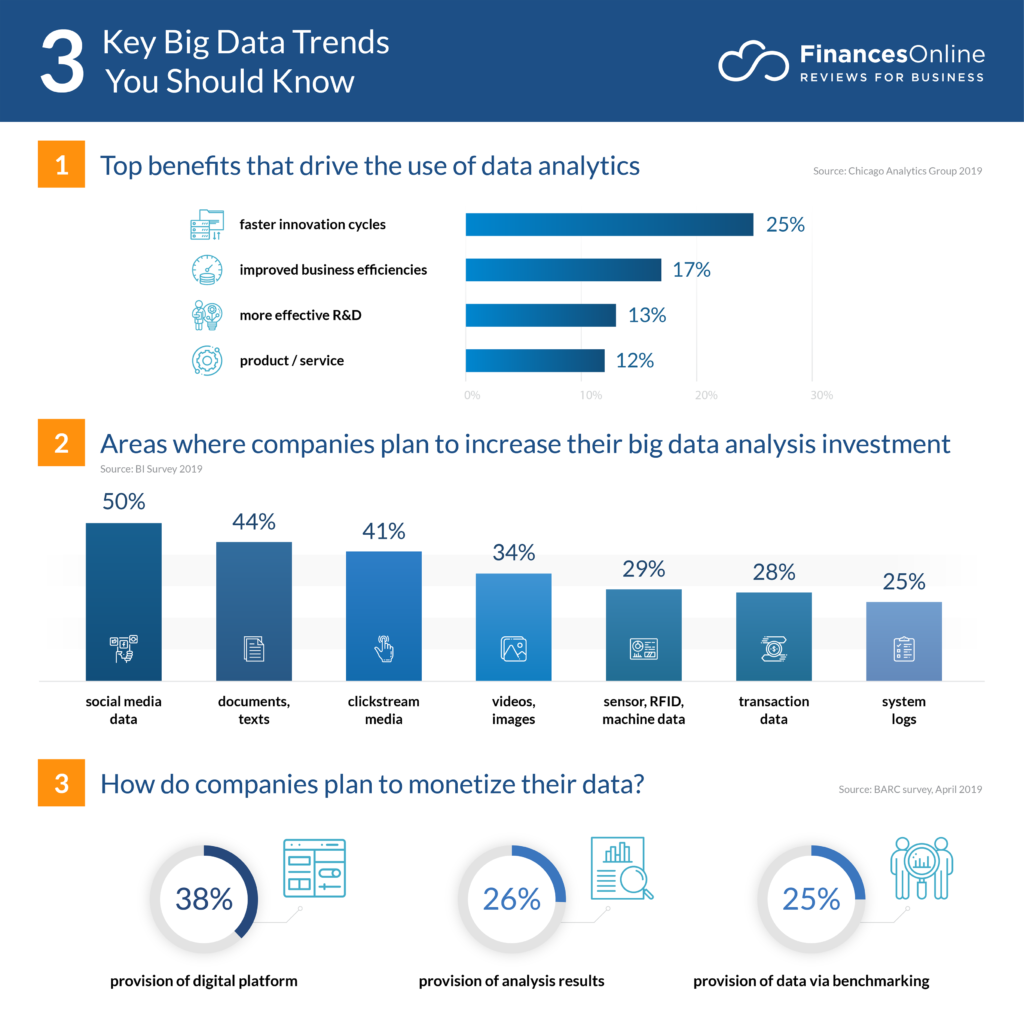
Big data analytics have transformed the way businesses make decisions and operate in today's digital age. As technology continues to advance, the future of big data analytics looks promising, with new trends and predictions on the horizon. In this article, we'll explore the latest trends and predictions for the future of big data analytics.
Increased Use of Artificial Intelligence and Machine Learning
Artificial intelligence (AI) and machine learning (ML) are already being used in big data analytics, but the future will see an increase in their usage. AI and ML can help businesses analyze large volumes of data quickly and accurately, and can also be used to automate tasks such as data cleaning and processing. As AI and ML continue to improve, businesses will be able to gain even more insights from their data, and make more informed decisions.
Greater Integration with the Cloud
The cloud has already transformed the way businesses store and access data, and the future of big data analytics will see even greater integration with the cloud. Cloud-based big data analytics can provide businesses with more storage and processing power, enabling them to analyze larger volumes of data more quickly and efficiently. Additionally, cloud-based big data analytics can be more cost-effective than on-premises solutions, making it more accessible to businesses of all sizes.
Increased Focus on Data Privacy and Security
Data privacy and security are major concerns for businesses and consumers alike. As big data analytics continues to grow, there will be an increased focus on data privacy and security. Businesses will need to ensure that they are collecting and storing data in a secure and ethical manner, and that they are complying with data privacy regulations such as GDPR and CCPA. Additionally, businesses will need to invest in cybersecurity measures to protect their data from cyberattacks.
The Rise of Edge Computing
Edge computing involves processing data closer to the source, rather than sending it to a centralized location for processing. This can help reduce latency and improve performance, making it ideal for real-time applications such as IoT devices. As big data analytics continues to expand into IoT devices and other real-time applications, edge computing will become increasingly important.
Greater Use of Data Visualization
Data visualization can help businesses gain insights from their data more quickly and easily. As big data analytics continues to grow, there will be a greater focus on data visualization. Businesses will need to invest in tools and technologies that enable them to visualize their data in a way that is easy to understand and interpret.
Conclusion
The future of big data analytics looks promising, with new trends and predictions on the horizon. Businesses will need to stay up-to-date with the latest technologies and best practices to remain competitive in today's digital age. By embracing new technologies such as AI and ML, integrating with the cloud, focusing on data privacy and security, adopting edge computing, and using data visualization, businesses can gain even more insights from their data and make more informed decisions.